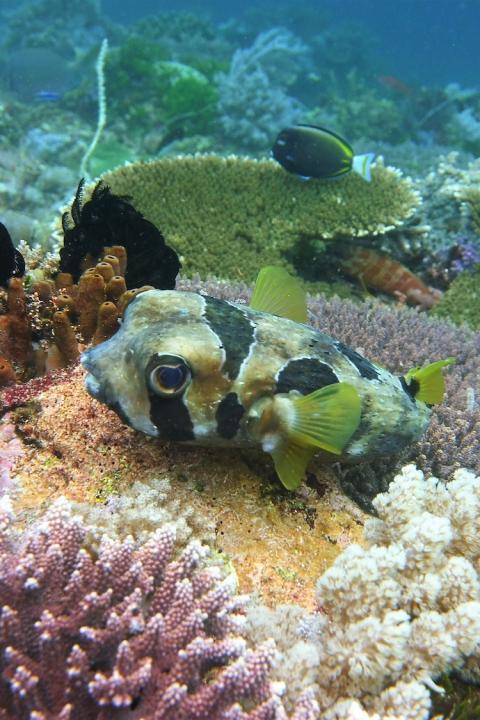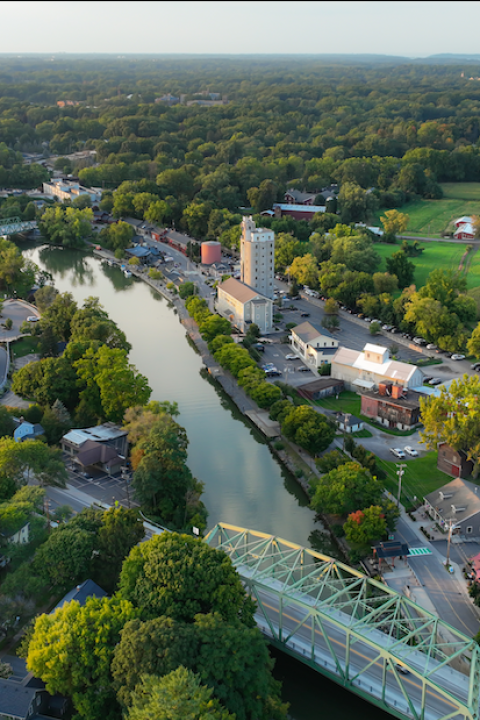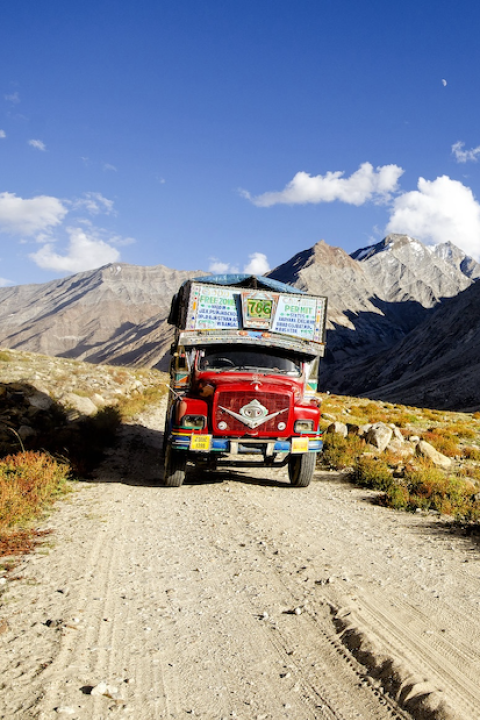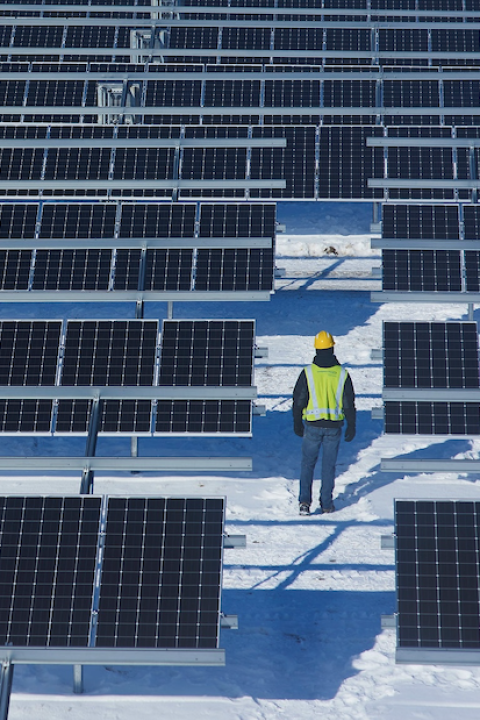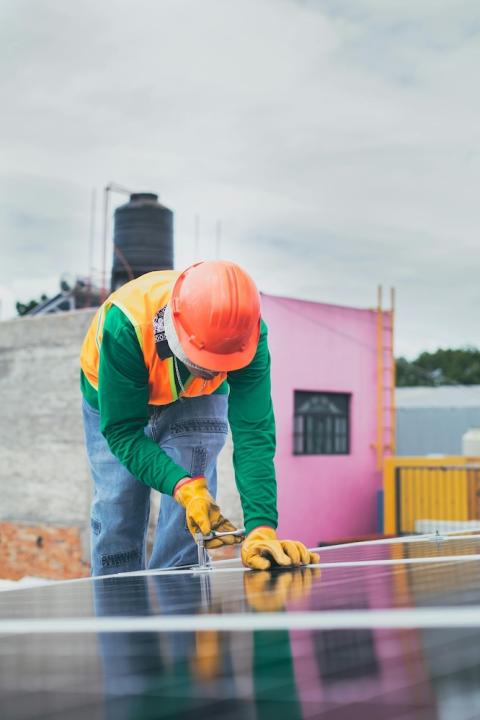
A native plant garden at the Chicago Botanic Garden. (Image: cultivar413/Wikimedia Commons)
During the 16th century, castles were surrounded by grassy areas to make it easier to see the approach of enemy soldiers. Later, wealthy landowners adopted the practice, and these verdant expanses came to signify social status. After all, these areas took time and money and ate up space that could otherwise be filled with crops.
While the lawn didn’t reach the American middle class until after the Civil War, we’ve adopted them wholeheartedly. Lawns are now the largest irrigated crop in the continental U.S., covering an area larger than Georgia. Yet these vast extents of mainly non-native grasses could be put to better use by native plants.
We’ve lost 200 native plant species since the early 1800s, and hundreds more are threatened in the U.S., according to the U.S. Bureau of Land Management. Habitat loss, climate change, invasive species, pollution and wildfires all threaten native plant communities.
Native flora provides food and shelter for wildlife while saving landowners time and money. Filling yards, school grounds, roadsides and office landscapes with native plants can reduce our environmental footprint, one flower bed at a time.
Native flora for the birds
For starters, wildlife greatly benefits from native vegetation. “We think plants are just decorations and we decorate our yards with the prettiest plants from all over the world,” said Douglas Tallamy, a professor of entomology and wildlife ecology at the University of Delaware. “But plants from Asia, South America or Europe do not have the co-evolutionary relationships required to support the insect-based food web. And when it comes to things like birds, that's huge.”
For instance, suburban properties in Pennsylvania filled with native vegetation have more abundant and diverse groups of birds and caterpillars than properties with a mix of non-native and native vegetation, according to one of Tallamy’s studies.
He also found similar results in hedgerows. Those invaded with non-native plants had significantly fewer insects than those with native plants.
“There's a 68 percent reduction in the number of species of caterpillars, a 91 percent reduction in the abundance of those caterpillars, and a 96 percent reduction in the biomass, [which is] the actual amount of energy available,” Tallamy said. “So, if you say those caterpillars are bird food — and they are — you reduce bird food by 96 percent when you allow your habitat to get invaded.”
Besides birds, native plants also provide food and cover for mammals, butterflies and bees.
Native plants benefit the environment
In addition to supporting wildlife, native plants bring other advantages to the table.
Planting native vegetation lowers the chance of introducing the next invasive species into the environment. Many invasive plants, like Kudzu or English ivy, originally escaped from landscaping or gardens in the U.S. These invaders can cause erosion, poor water quality, reduce the diversity of plants and animals, increase the risk of fires, and impact industries like forestry.
Native plants are also a better choice for fighting climate change. While both native and non-native plants uptake carbon, lawns are not the best option.
“The very worst plan for sequestering carbon is turf grass,” Tallamy said. “It's got very short roots. We mow it every week, releasing any carbon that it did sequester.”
In addition, lawnmowers use 800 million gallons of gasoline each year, contributing to global warming. We also spill 17 million gallons of fuel while refilling lawn equipment, polluting the air and water. And, as any suburbanite knows, lawnmowers contribute to noise pollution.
Finally, native plants mitigate droughts, clean water, and prevent flooding and erosion. They also provide a source of genetic diversity for new crops and medicine and are culturally important to Indigenous groups.
Boons to the landowner
Besides the plentiful environmental perks, homeowners also profit from native flora. First of all, it can be easier to care for, requiring less fertilizers and pesticides than lawns. Americans spread 70 million pounds of pesticides each year on their lawns, harming birds, beneficial insects and wildlife. In addition, pesticides and fertilizers can wash off into lakes, streams and rivers, killing aquatic life.
We’re not immune either — pesticide exposure is suspected to be linked to negative health effects like cancer, blood and nerve disorders, infertility and birth defects.
Compared to lawns, native plants also save water. In the U.S., nearly one-third of our residential water goes to landscaping. Stemming the floodgates of lawn water can save money and help during droughts.
We also gain personally if our houses are surrounded by native plants.
“There are benefits to reconnecting with nature and there are a lot of sociological studies showing that when you spend 15 minutes walking in a wood lot your blood pressure goes down, and your stress hormone — cortisol — goes down,” Tallamy said. “Particularly the stress hormone, that's related to everything. You learn better, you're a nicer person, divorces drop, learning goes up, and you heal faster [when cortisol drops].”
But native vegetation often costs more and is less readily available compared to non-native plants. And despite the drawbacks, planting a lawn isn’t devoid of benefits. They soak up water and reduce the heat island effect.
In addition, some people also consider lawns more aesthetically pleasing than native plants, Tallamy said. However, he suggests that landowners cut their lawns in half, so they still benefit from additional trees and beds of native vegetation without losing any grassy appeal. Incorporating native plants into your lawn slowly also helps make that goal more manageable.
Sustainable gardens
Over the past two decades, urban sprawl has crept over 14,000 square miles of undeveloped land in the U.S., fueling biodiversity loss. Planting native gardens and trees is an easy way to mitigate some of this decline while also sparing endless hours of mowing.
“We've got a biodiversity crisis. We're in the sixth great extinction that the planet has ever experienced, and it's largely because we've got this idea that humans are here and nature is someplace else,” Tallamy said. “We have to practice conservation outside of parks and preserves — that's on private property. And that means we've got to think about the way we landscape where we live, where we work, and where we play.”

Ruscena Wiederholt is a science writer based in South Florida with a background in biology and ecology. She regularly writes pieces on climate change, sustainability and the environment. When not glued to her laptop, she likes traveling, dancing and doing anything outdoors.




